Field Trip Permission Letter Template for Easy Customization
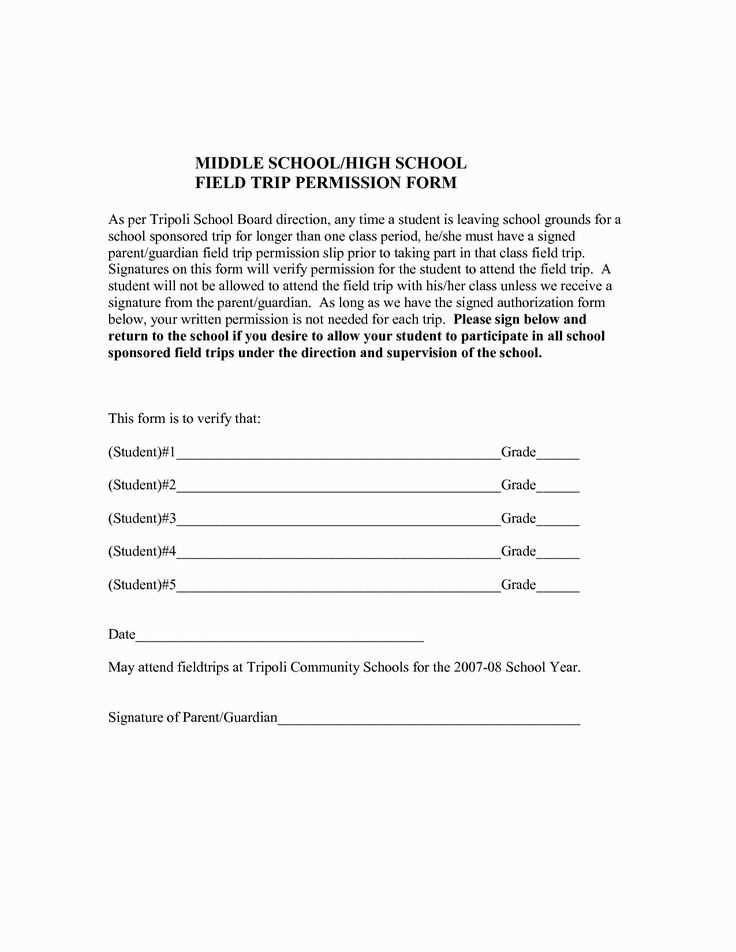
When organizing educational outings for students, it is crucial to ensure that proper communication is established with parents and guardians. One of the most important tasks is to provide clear and informative documentation that outlines the details of the event, including important dates, responsibilities, and any special instructions. These forms not only serve as a means of gaining consent but also as a tool to ensure safety and clarity for all parties involved.
Creating a well-structured document helps streamline the process and avoids confusion. Whether it’s a short visit to a local museum or a longer excursion, having an organized format in place makes it easier to convey all necessary information. It’s essential to tailor each form to the specific event while maintaining consistency in structure for future use.
In this guide, we’ll explore the key elements that make these documents effective and how you can easily customize them for various occasions. Understanding what to include and how to present the information clearly can save time and ensure that the necessary permissions are obtained without complications.
Importance of a Permission Letter
When planning an educational outing, one of the most critical steps is ensuring that parents or guardians are fully informed and have given their consent. This process not only ensures the safety and well-being of the students but also establishes clear communication between the school and families. A well-prepared form helps avoid misunderstandings and ensures that all necessary arrangements are understood by everyone involved.
Ensuring Safety and Legal Compliance
Obtaining formal approval from parents or guardians is essential for meeting legal requirements. It ensures that the school is protected from any potential liability issues. Moreover, the document outlines important details such as emergency contact information, medical needs, and other relevant instructions, helping to safeguard the students during the activity.
Streamlining Communication and Organization
Providing clear, concise documentation helps keep all parties organized and informed. When parents receive a properly structured form, they are more likely to understand the event’s purpose, logistics, and their role in supporting the activity. This transparency reduces confusion and ensures smoother planning and execution of the event.
Key Details to Include in the Document
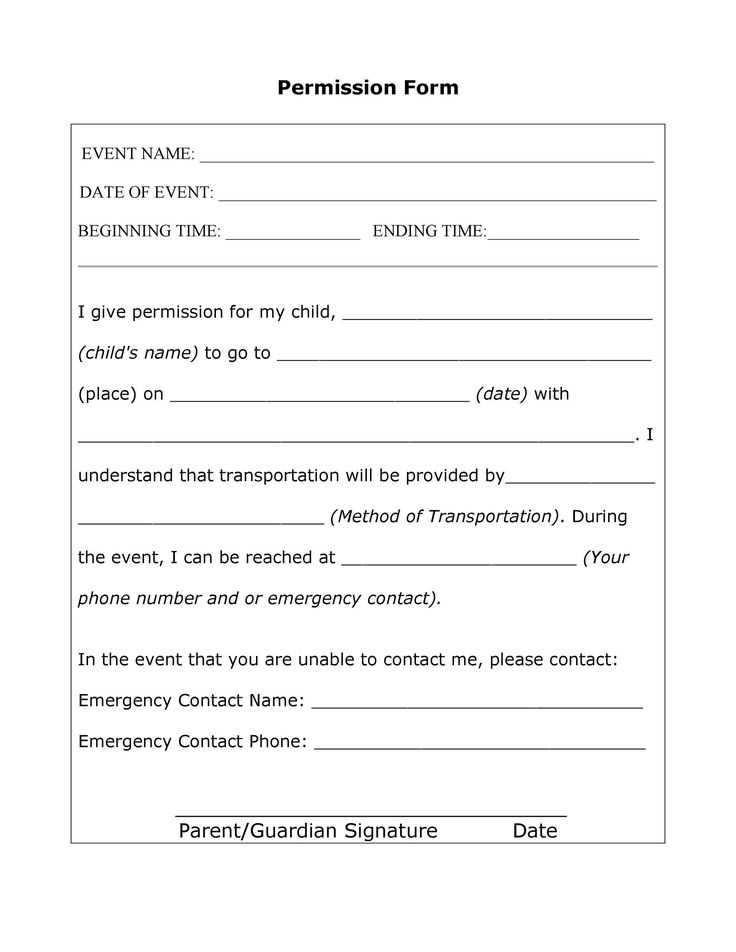
When creating a formal form for an educational outing, it is crucial to ensure that all essential information is included. The document should cover not only the specifics of the event but also any necessary safety precautions, emergency procedures, and parental responsibilities. By including these details, you ensure that both parents and the school are well-prepared for the experience.
Basic Information About the Event
The form should begin with fundamental details such as the event’s location, date, time, and purpose. This section provides parents with a clear understanding of the activity and its relevance to the students’ education. It’s also helpful to include any costs involved, transportation arrangements, and instructions for what the children should bring along.
Health and Safety Considerations
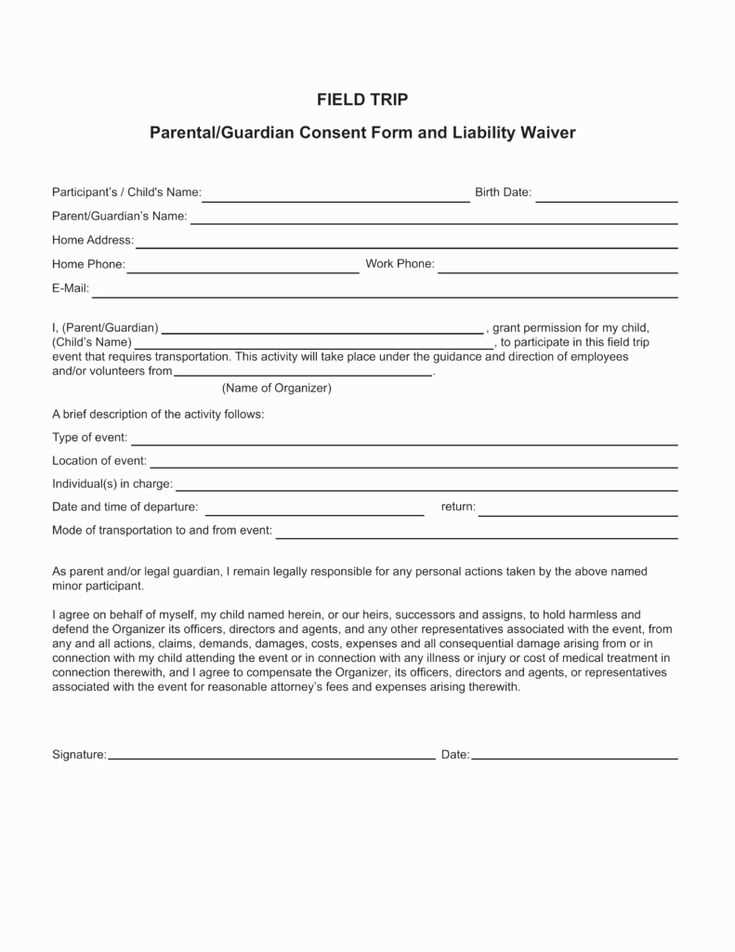
To ensure the well-being of all participants, include space for medical information, allergies, and emergency contacts. This section allows parents to provide crucial details about their child’s health, ensuring that the school can respond appropriately in case of an emergency. Additionally, instructions for any necessary medications or special accommodations should be clearly outlined.
How to Customize the Consent Form
Adapting a general consent form to suit the specific needs of an event is an essential part of the process. Customization ensures that the document reflects the unique aspects of the activity, provides clear instructions, and accommodates any particular requirements. Tailoring the form helps streamline communication and ensures all relevant details are included.
Adjusting for Specific Event Details
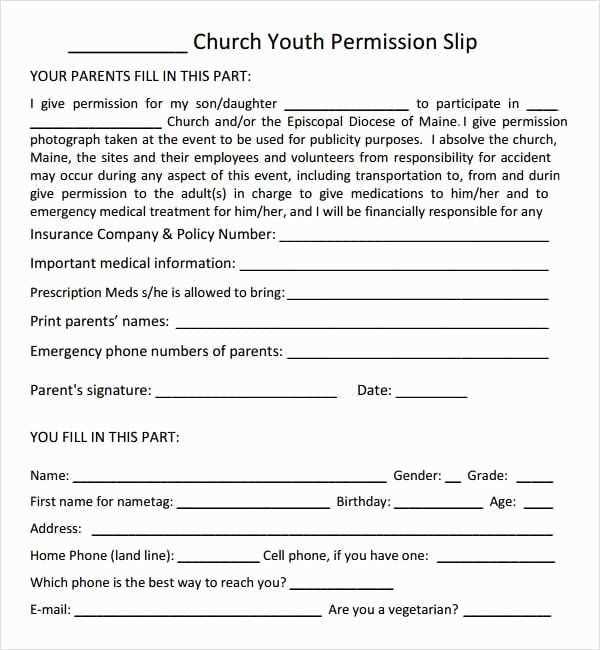
To make the form relevant to a particular event, start by modifying key information such as the location, schedule, and purpose. Ensure the details match the specifics of the outing so parents and guardians are well-informed. Additionally, customize the instructions for what students need to bring and what to expect during the event.
Incorporating Additional Sections
Some activities may require additional sections, such as special medical information, dietary restrictions, or behavioral expectations. If needed, add these elements to the form to ensure it covers all the requirements. This customization can also include personalized fields for emergency contacts or a waiver section, depending on the nature of the event.
| Section | Customization Options |
|---|---|
| Event Information | Update location, date, and purpose |
| Medical Information | Include space for allergies or special needs |
| Parent/Guardian Contact | Allow for multiple emergency contacts |
| Waivers | Add necessary legal or liability disclaimers |
Tips for Clear and Concise Communication
When crafting any document that requires parental approval, it’s important to keep the language simple and direct. The goal is to ensure that all involved parties clearly understand the event details, expectations, and any necessary actions. By avoiding unnecessary complexity and using straightforward wording, you can reduce confusion and make the process smoother for everyone.
Use Simple and Direct Language
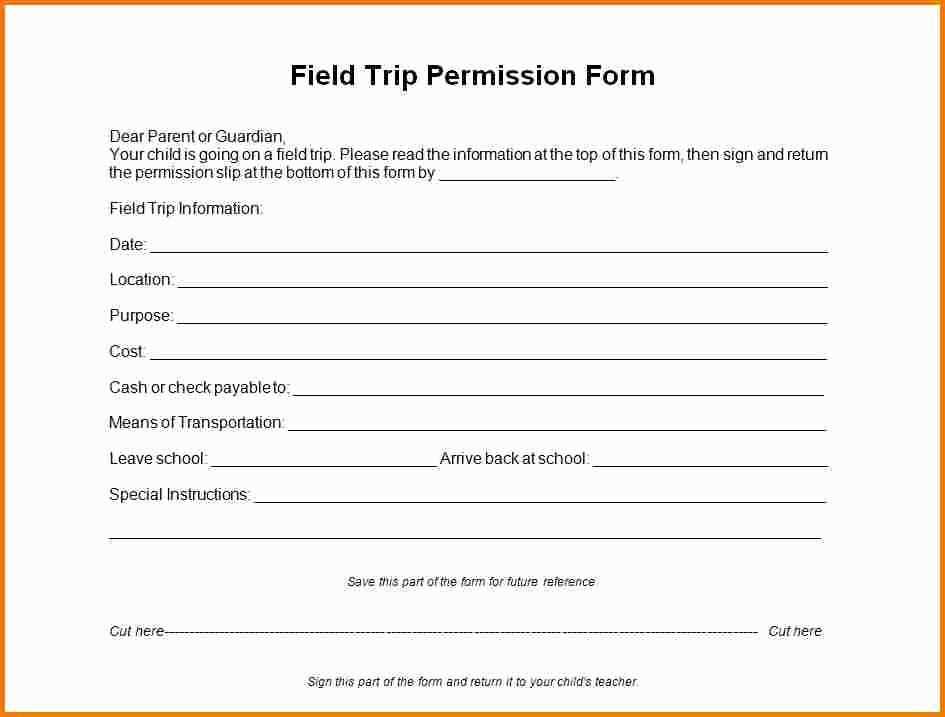
Choose words that are easy to understand and avoid jargon or overly formal language. Parents and guardians may not be familiar with specific terms, so keeping the language accessible ensures that the information is communicated effectively. Make sure to convey all necessary details without overwhelming the reader with too much information at once.
Focus on Key Information
Highlight the most important elements of the event, such as dates, times, location, and any required actions. Organize the information in a way that makes it easy to scan quickly. Bullet points or short paragraphs are great tools for breaking down the content and allowing parents to focus on what matters most without getting bogged down by unnecessary details.
Legal Aspects to Consider for School Outings
When organizing any school-related excursions, it’s crucial to be aware of the legal responsibilities involved. Ensuring that all documentation is properly completed and complies with relevant regulations helps to protect both the school and the participants. Understanding the legal requirements can prevent potential issues and ensure the safety and well-being of students during these activities.
- Parental Consent: Always obtain written consent from parents or guardians to ensure that they are aware of the event and approve their child’s participation.
- Insurance Coverage: Verify that the activity is covered under the school’s insurance policy, particularly in case of accidents or emergencies.
- Medical Information: Collect relevant medical details and emergency contact information to address any health concerns that may arise during the outing.
- Liability Waivers: In some cases, schools may need to include a waiver to release liability for certain risks involved in the activity.
- Local Laws and Regulations: Be sure to check local legal requirements, including any restrictions on transportation, supervision, or venue-specific rules.
By considering these legal aspects, schools can create a safe and compliant environment for their outings, ensuring that all parties are protected and well-prepared for the experience.
Effective Ways to Distribute Consent Forms
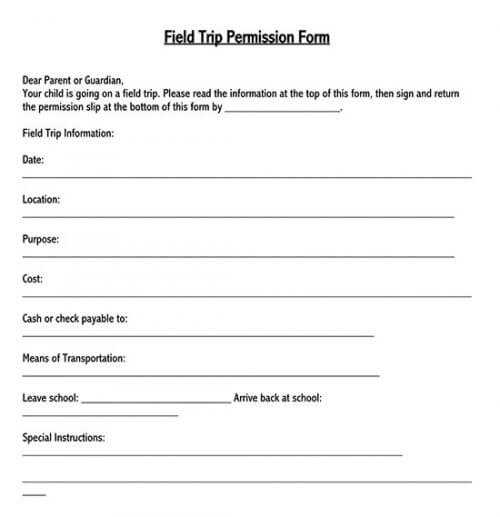
Distributing forms efficiently ensures that all parents or guardians receive the necessary information and are able to provide the required approvals in a timely manner. By selecting the right method for sending out the documents, you can minimize delays and avoid confusion. Here are some effective strategies for distributing forms to ensure smooth communication.
- Digital Distribution: Use email or a school communication platform to send the form electronically. This allows parents to easily access and return the documents with minimal effort.
- Printed Copies: For those who prefer physical copies, consider sending printed versions home with students. Make sure to include a clear return deadline and provide an envelope if necessary.
- Online Forms: Utilize online form services that allow parents to complete and sign the documents digitally. This method is especially useful for reducing paper usage and increasing efficiency.
- Text Messaging: For quick reminders or to notify parents about upcoming deadlines, use text messaging services that link directly to the document, making it easy for them to access and submit.
By choosing the most appropriate distribution method for your audience, you ensure that all necessary forms are received, signed, and returned on time, helping to streamline the process and ensure smooth participation in the event.